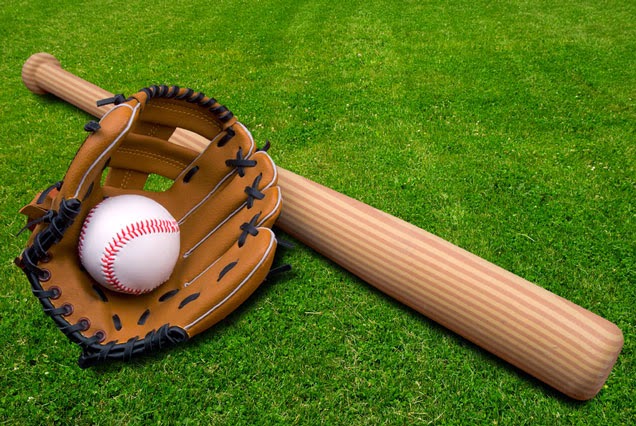By: Amanda Leibovitz
(Edited by Kacey Gibson & Dr. Michele Kerulis)
Photo Credit: Depositphoto
Spring is finally in the air, and
with warmer weather comes an increasing number of athletes and exercisers
heading outside with their training. As
such, a common sight along the Chicago lakefront path is that of a fit and
active mother pushing a child in a stroller as she fits in her morning
run. The dedicated effort of many
mothers to regain and maintain fitness after childbirth is admirable, to say
the least, and it also begs the question, “How do they do it?”
Social stereotypes and expectations
of women’s responsibilities during motherhood can often lead to the development
of the good mother identity, which is
characterized by the internalization of the social definition of a woman who is
present and self-sacrificing (Appleby & Fisher, 2009). As such, it is common for new mothers to
experience conflicting feelings about their responsibilities as a mother and as
an athlete, especially when athletic commitments take them away from their
children (Appleby & Fisher, 2009).
However, many mother-athletes eventually
begin to resist these social stereotypes of motherhood, viewing mothering and
athleticism as complimentary, rather than contradictory (Appleby & Fisher,
2009). This new view on the roles of
mother and athlete allows women the space to negotiate a new identity that
combines both roles, resulting in decreased pressure to perform, being a role
model for other women, and identifying the multidimensional aspects of their
lives (Appleby & Fisher, 2009).
The link between the good mother paradigm
and sport psychology consulting is rooted in the need for responsible sport
psychology consultants to understand the sociopolitical context that may be
affecting new mothers as they struggle to return to sport after childbirth
(McGannon, Curtin, Schinke, & Schweinbenz, 2012). Expected behaviors based on cultural values
and norms regarding women, motherhood, and sport can create identities that
impact the ways in which athletes may be perceived by society and how the
athlete views herself (McGannon et al., 2012).
Responsible sport and exercise practitioners will make efforts to
understand both the external and internal pressures on mother-athletes in order
to most accurately conceptualize the client and her needs (McGannon et al.,
2012). In addition, sport and exercise psychology consultants should work to
develop the skills and techniques necessary to assist the client through the
process of role negotiation and to help female athletes reach their exercise,
sport, and performance goals (McGannon et al., 2012).
Lisa Pedersen, LCSW, author of the website
and book-in-progress Birth like an Athlete, recognizes that “Life
doesn't stop when you leave your sport. Instead, life continues when you
prepare for a baby and motherhood, and that may be the greatest accomplishment
of all.” Pedersen helps athletes focus on their pre-and post-natal mental
health, fitness, and sports goals. She
believes that sharing womens’ stories will help inspire other women to remain
active and also to help them adjust to their new role as mothers.
In
addition, fitness writer Lisa Payne
encourages people to join her movement #TryFitWeekly and try a new workout or
fitness class each week. This might be especially helpful for new moms who want
new and interesting fitness classes. Payne recommends a Chicago based women’s
gym called Prenatal Fit
that focuses on pre- and
post-pregnancy fitness.
A
third idea is for balancing athletics and being a mom is by integrating
creative ideas into your fitness routine. Brianne
Wiseman, “Gracefully Evolving Mom,” recommends high intensity interval
training, making your baby your workout buddy, and utilizing playground time
for workouts. Moms sometimes have a hard
time balancing time to take care of themselves with taking care of their
families and other responsibilities. Taking time for herself will allow her to
recharge her energy.
References
Appleby, K. M., & Fisher, L. A. (2009).
“Running in and out of motherhood”: Elite distance runners’ experiences of
returning to competition after pregnancy. Women
in Sport and Physical Activity Journal, 18(1), 3-17. Retrieved from http://ezproxy.adler.edu/login?url=http://search.ebscohost.com/login.aspx?direct=true&db=s3h&AN=47556332&site=ehost-live&scope=site
McGannon, K. R., Curtin, K., Schinke, R.
J., & Schweinbenz, A. N. (2012). (De)Constructing Paula Radcliffe:
Exploring media representations of elite running, pregnancy and motherhood through
cultural sport psychology. Psychology of
Sport and Exercise, 13(6), 820-829. Retrieved from http://ezproxy.adler.edu/login?url=http://search.ebscohost.com/login.aspx?direct=true&db=s3h&AN=79337925&site=ehost-live&scope=site




